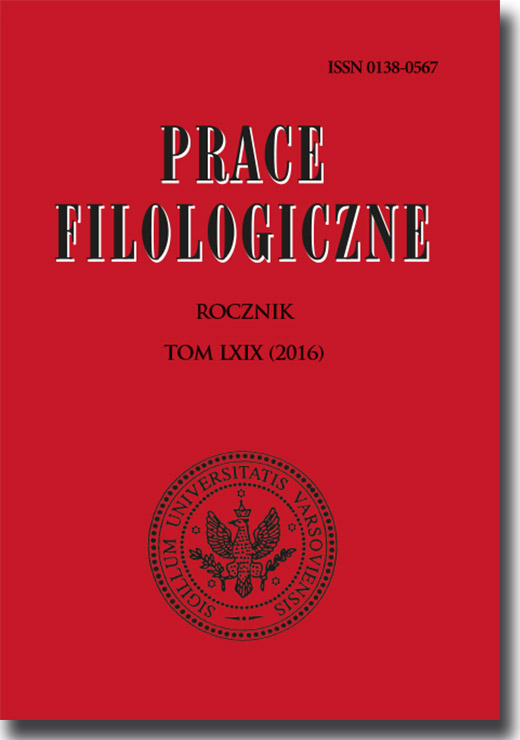Nazywanie ludzi w wielkopolskich rotach sądowych z XIV i XV wieku
Naming People in the 14th- and the 15th-Century Judicial Oaths of Greater Poland
Author(s): Maria TrawińskaSubject(s): Language and Literature Studies, Theoretical Linguistics, Applied Linguistics
Published by: Wydział Polonistyki Uniwersytetu Warszawskiego
Keywords: onomastyka; antroponimy; formacje dwuimienne; apelatywy antroponimiczne; onomastics; anthroponyms; two-name formations; apelative anthroponyms
Summary/Abstract: The article discusses naming people in medieval court records, which contain very rich anthroponymic material. Most of the people mentioned have been recorded several times or more, because some trials lasted a couple of years and the writers recalled the parties participating in the conflict as well as witnesses. Multiple references to the same person do not entail using consistently the same name. Typically, a set of terms referring to a+ given person was used, although in one entry only one of these has been employed. The naming method discussed in article, applied to {Mościc ze Stęszewa} and {Wojciech z Kobylina} as well as {Mikołaj z Bytynia}, makes it possible to illustrate two important issues. The first one consists in the functioning of a two-name system in the end of the 14th century. The material clearly shows that a person was identified by two terms, wherein the emphasis is not placed on the stability of reference, which means that the identification elements are not fixed. The second issue is the transition of words from the group of common names to the group of proper names. The function of terms such as {wojewoda} (‘voivode’) or {kasztelan} (‘castellan’) is two-fold: that of a common name and that of a proper name, which means that they belong to both groups.
Journal: Prace Filologiczne
- Issue Year: 2016
- Issue No: 69
- Page Range: 493-501
- Page Count: 9
- Language: Polish

